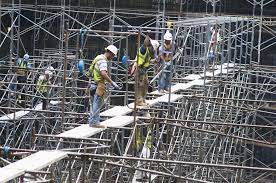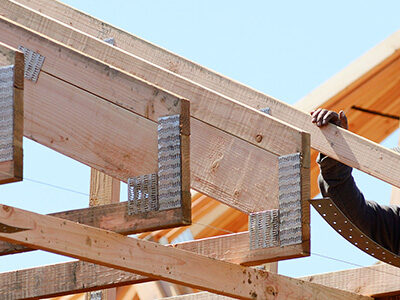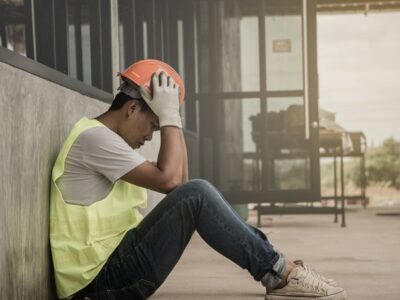California construction workers often must work on or near scaffolding, putting them at high risk of injury. In fact, FindLaw reports that, according to figures from the Occupational Safety and Health Administration (OSHA), 65 percent of construction workers must use scaffolds, hoists, ladders, or lifts as part of their job duties.
Causes of Scaffolding Accidents
According to the Bureau of Labor Statistics’ Census of Fatal Occupational Injuries, 72 percent of scaffold-related injuries are attributed to four primary causes: planking or supports giving way, slips and falls, falling objects, and unsafe access.
Additional hazards often play a role. Bad weather can make scaffolds slippery or unstable, improper assembly and overloading can compromise their structure, and placing scaffolds too close to power lines can lead to electrocution. These factors underscore the importance of strict compliance with OSHA and Cal/OSHA safety standards.
Scaffolding Design and Construction
OSHA requires that each scaffold and its parts support their own weight plus four times the intended load, while suspension ropes must handle six times their own load. Different scaffold types—supported, suspended, cantilever, birdcage, and aerial lifts—have unique design requirements and safety considerations for access. Employers must ensure qualified personnel handle assembly and maintenance.
In California, Cal/OSHA adds state-specific safeguards, including stricter load testing and record-keeping requirements. Failure to follow these regulations is a frequent cause of collapses and preventable accidents.
Scaffolding Inspection
Before every shift, a “competent person” designated by the employer must inspect scaffolds for defects. No one should alter, move, or dismantle a scaffold without the direct supervision of a qualified person. Inspections also extend to personal protective equipment (PPE) such as harnesses, lanyards, droplines, and anchors, which must be in good condition and replaced if damaged.
Scaffolds must also be reinspected after events such as storms, seismic activity, or site changes that could affect stability. This ensures ongoing compliance and reduces the risk of accidents.
Worker Responsibility
While employers oversee scaffold safety, workers must wear required protective gear, follow established safety practices, and participate in training programs. OSHA mandates that scaffold users receive training on hazard recognition, assembly procedures, and fall protection. Cal/OSHA reinforces this through refresher requirements to ensure long-term safety.
Medical Consequences of Scaffold Accidents
Scaffold accidents frequently cause severe injuries such as broken bones, spinal cord damage, traumatic brain injuries, and amputations. Survivors often face long-term disabilities, costly rehabilitation, and extended loss of income. Fatal accidents bring wrongful death claims and devastating financial consequences for families.
Rescue and Emergency Response
If a fall occurs and a worker is left suspended in a harness, immediate rescue is crucial, as suspension trauma can develop within minutes. Employers must maintain written rescue procedures, train workers in emergency response, and keep equipment on-site to ensure rapid recovery.
Employer Liability and Penalties
OSHA imposes serious penalties for safety violations. A single serious violation can exceed $14,500, while willful or repeat violations may surpass $145,000. Cal/OSHA can issue further fines and, in extreme cases, criminal charges. Employers who cut corners not only face fines but also higher insurance costs, lawsuits, and long-term financial repercussions.
Legal Consequences of Scaffold Accidents
Most injured workers pursue workers’ compensation, which covers medical expenses and partial wages. However, when accidents involve defective equipment, negligent subcontractors, or third-party responsibility, additional personal injury claims may be possible. California law also enforces strict deadlines for filing claims, and importantly, undocumented workers maintain the right to compensation under state law.
Frequently Asked Questions
What is a “competent person”?
A trained individual designated by the employer to identify scaffold hazards and oversee corrections.
How often are scaffolds inspected?
Before every shift and after events such as storms, high winds, or accidents that could affect safety.
What are the main types of scaffolds?
Common types include supported scaffolds, suspended scaffolds, cantilever scaffolds, and aerial lifts.
Can undocumented workers file claims after scaffold accidents?
Yes. California law ensures undocumented workers can seek workers’ compensation and, in some cases, additional claims.
What compensation is available after a scaffold accident?
Workers may receive medical costs, lost wages, rehabilitation expenses, and sometimes pain and suffering damages in third-party claims.
If you or a loved one has been injured in a scaffold accident, you may be entitled to workers’ compensation and possibly additional recovery through personal injury claims. Acting quickly is essential to protect your rights.
At Hussain & Gutierrez, we represent construction workers across California in scaffold accident cases. Our attorneys have the experience to navigate workers’ compensation, pursue third-party claims, and fight for maximum recovery.
Call Hussain & Gutierrez today for a consultation.



